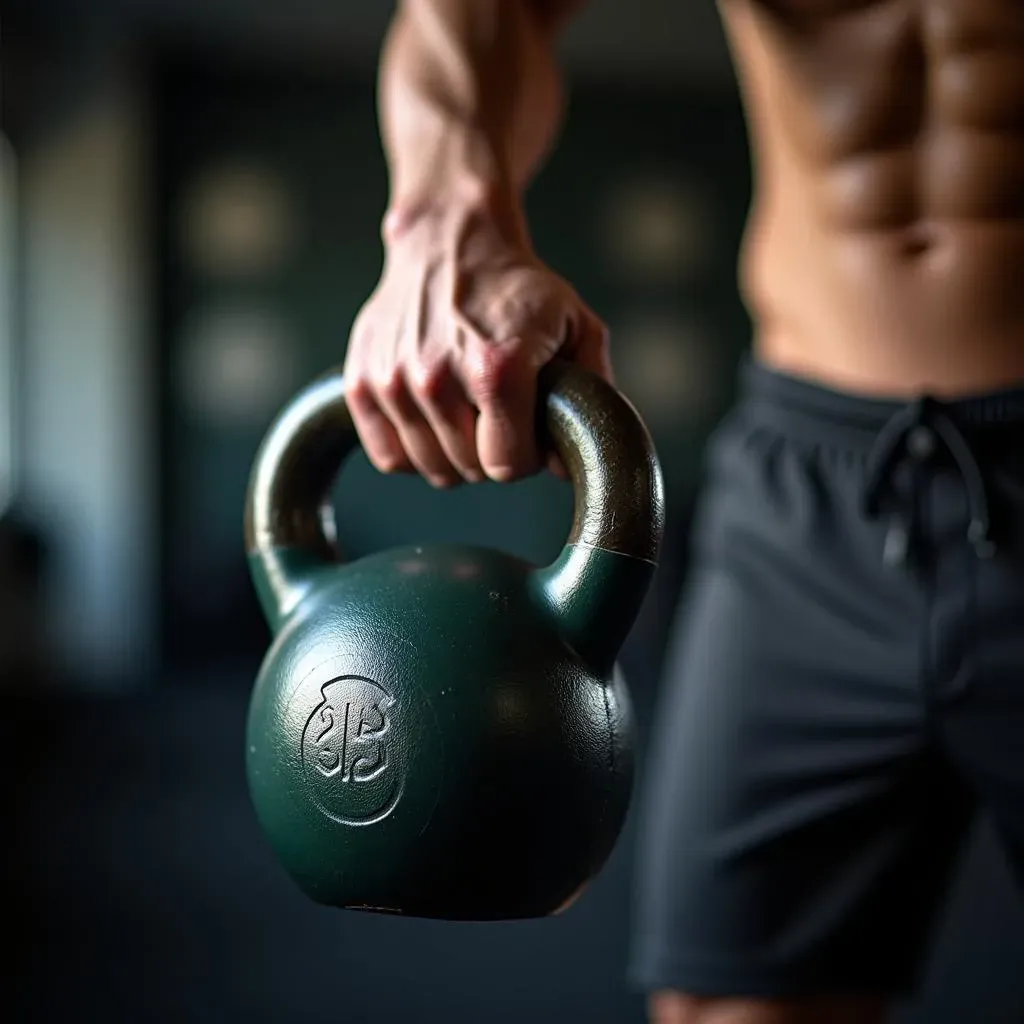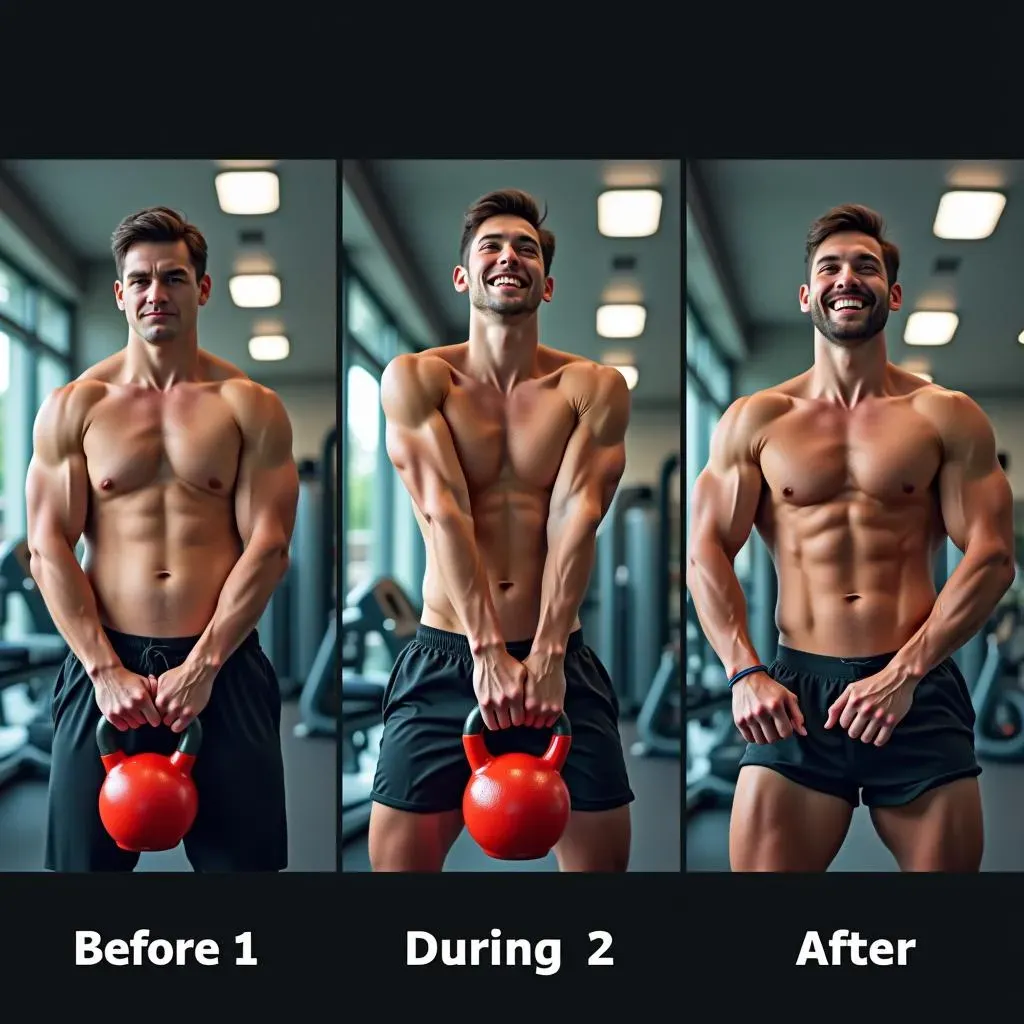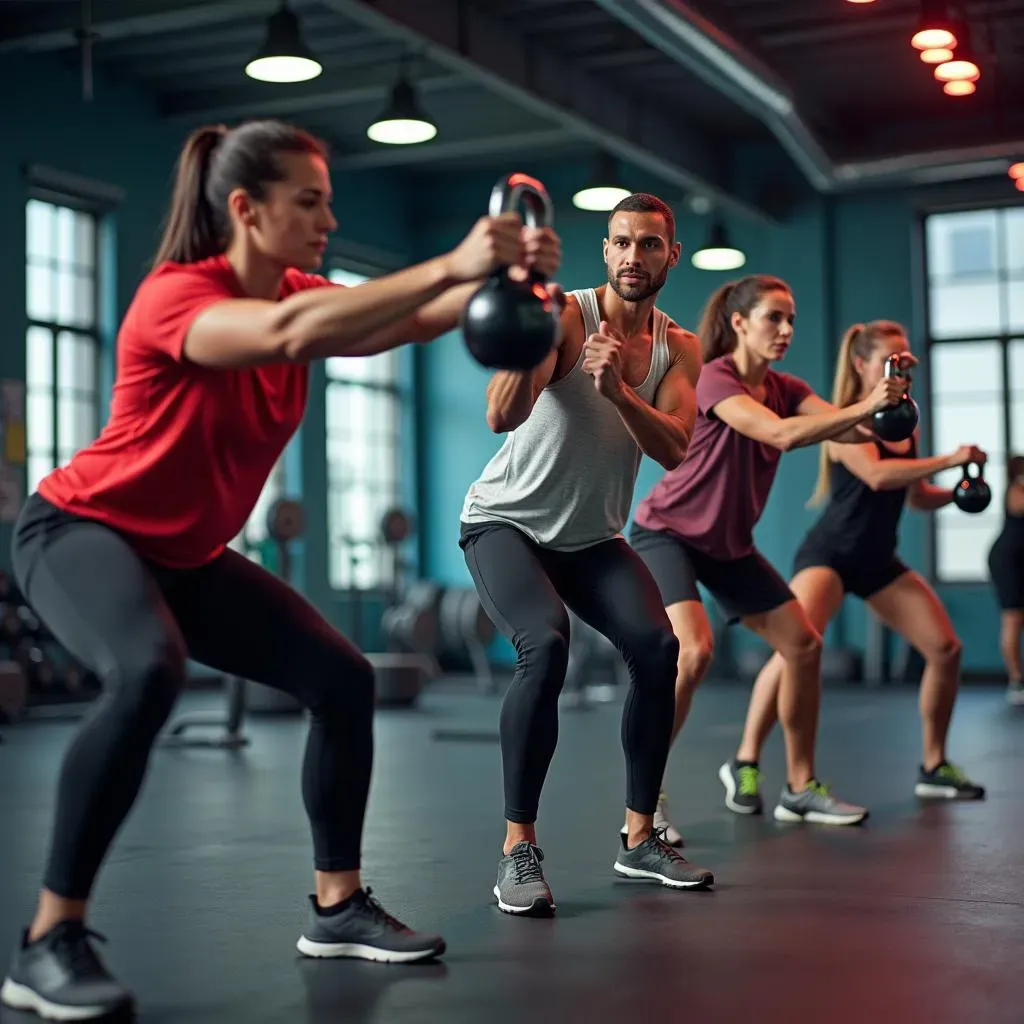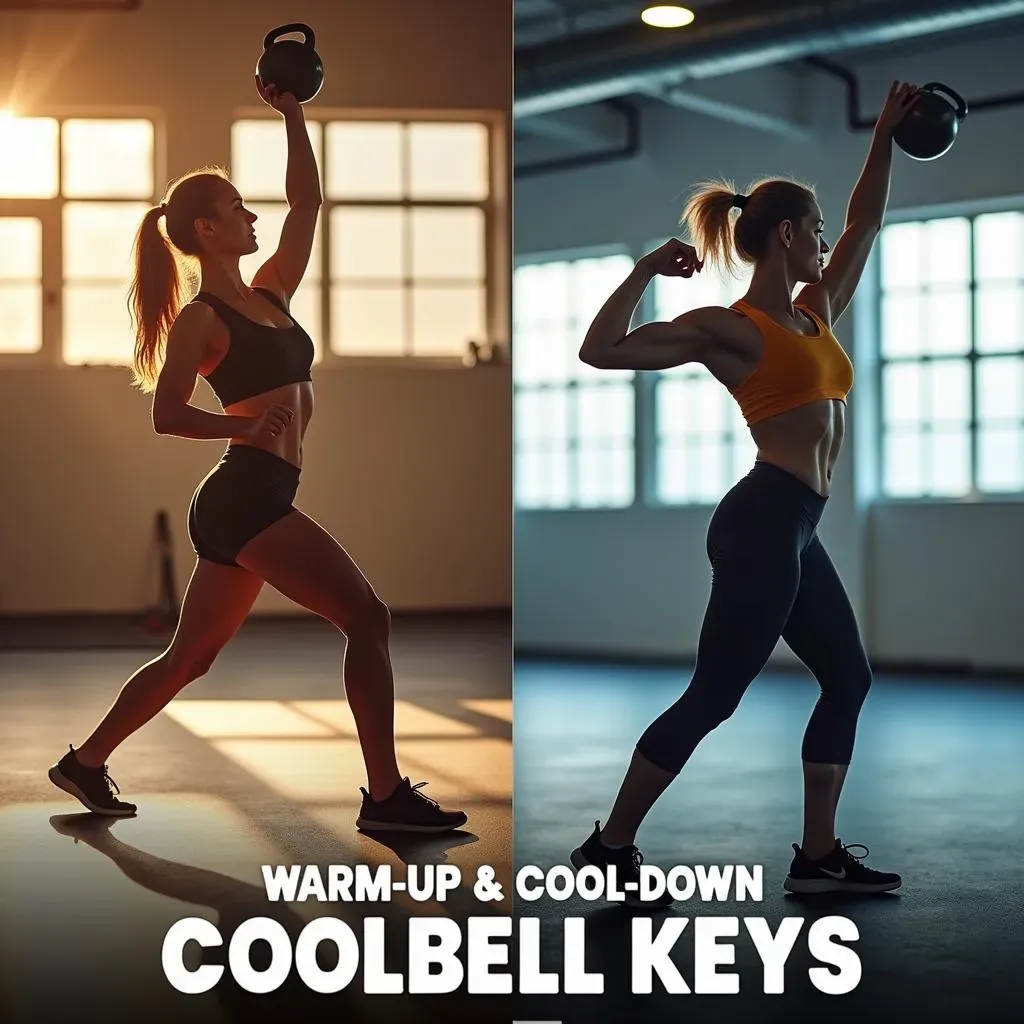Table of Contents
Kettlebell workouts have exploded in popularity, and it's easy to see why. They're versatile, effective, and can be done just about anywhere. But a question that often pops up is: how long should a kettlebell workout be? There's no one-size-fits-all answer, and that's what we're here to unpack. This article will guide you through the key factors that determine the ideal duration of your kettlebell sessions. We'll explore why focusing on quality over quantity matters, and how your specific fitness goals—whether it's fat loss, muscle gain, or overall strength—play a crucial role. We'll also delve into the impact of workout intensity, rest periods, and how frequently you train each week. Plus, we'll emphasize the vital importance of warm-ups and cool-downs. So, let's get started on figuring out the perfect kettlebell workout length for you, ensuring it's both effective and sustainable.
Quality Over Quantity: Mastering Kettlebell Form

Quality Over Quantity: Mastering Kettlebell Form
Let's be real, it's tempting to just swing that kettlebell around like you're auditioning for a strongman competition. But here's the deal: quality over quantity is the golden rule when it comes to kettlebell training. Forget about chasing high reps or longer workout times if your form is sloppy. You're just asking for an injury, and you won't be maximizing the benefits of each exercise. Think of it like this: would you rather eat a whole pizza that tastes like cardboard, or a single slice of gourmet pizza that explodes with flavor? It's the same principle. Focus on nailing the technique, engaging the right muscles, and controlling the movement. This approach will not only keep you safe but also lead to better results in the long run.
Aligning Kettlebell Workout Duration with Your Fitness Goals

Aligning Kettlebell Workout Duration with Your Fitness Goals
Alright, so you've got your form down, now it's time to talk goals. Are you trying to shred fat, build muscle, or just become a generally stronger human? Aligning kettlebell workout duration with your fitness goals is paramount. If fat loss is your game, you're likely looking at shorter, more intense sessions with minimal rest. Think circuits and high-rep swings. On the flip side, if you're aiming to pack on muscle or increase strength, you might be doing fewer reps with heavier kettlebells and longer rest periods. This means your workout might be a bit longer overall. It's all about tailoring the workout to what you're trying to achieve. No point in running a marathon if you're training to be a sprinter, right?
Goal | Workout Style | Typical Duration |
|---|---|---|
Fat Loss | High-Intensity Circuits, Short Rest | 20-30 minutes |
Muscle Gain | Lower Reps, Heavier Weight, Longer Rest | 30-45 minutes |
General Strength | Combination of Strength and Conditioning | 30-40 minutes |
Intensity and Rest: Impact on Your Kettlebell Workout Length

Intensity and Rest: Impact on Your Kettlebell Workout Length
High Intensity, Short Duration
let's talk about pushing it to the max. High-intensity interval training (HIIT) with kettlebells is a beast, and it's designed to be short and sweet. We're talking about going all-out for a short burst, then taking a brief rest before hitting it again. The idea is to crank up your heart rate and keep it there. Because you're working so hard, you can't (and shouldn't) sustain these workouts for long periods. Think 20-30 minutes, max. Anything longer, and you risk burnout or injury. Plus, HIIT is super effective for torching calories and boosting your metabolism, so you don't need hours to see results.
Imagine doing rounds of kettlebell swings, snatches, and burpees, with only 30 seconds of rest in between. That's the kind of intensity that makes you question your life choices, but it also delivers serious results in a short amount of time. It's not about leisurely swinging a kettlebell; it's about pushing your limits in a controlled, strategic way.
Strength Training, Longer Rest, More Time
Now, let's shift gears to strength training. When you're lifting heavier kettlebells and focusing on building muscle, you need to give your body adequate rest to recover between sets. This means your overall workout time will likely be longer than a HIIT session. You might be doing fewer reps, but you'll need a good 1-2 minutes (or even more) of rest between each set to ensure you can maintain proper form and lift with maximum power. Think of it like charging your phone; you can't expect it to run all day if you only give it a 5-minute charge.
For example, if you're working on kettlebell squats, presses, and rows, you'll want to focus on controlled movements and really feeling the muscles working. This requires more recovery time than just blasting through reps. A strength-focused kettlebell workout might last 30-45 minutes, depending on the number of exercises and sets you're doing. It's about quality over quantity, but also about giving your body the time it needs to rebuild and get stronger.
Workout Type | Intensity | Rest Periods | Typical Duration |
|---|---|---|---|
HIIT | High | Short (15-30 seconds) | 20-30 minutes |
Strength Training | Moderate to High (depending on weight) | Longer (1-2 minutes or more) | 30-45 minutes |
Kettlebell Workout Frequency and Session Duration

Kettlebell Workout Frequency and Session Duration
so you're getting the hang of kettlebell workouts, but how often should you actually be swinging that iron? The sweet spot for kettlebell workout frequency and session duration really depends on your experience level and recovery capabilities. If you're just starting out, ease into it with 2-3 sessions per week, allowing your body ample time to recover in between. These sessions can be shorter, around 20-30 minutes, focusing on mastering the fundamental movements. As you get more comfortable and your body adapts, you can gradually increase the frequency and duration of your workouts. However, remember that overtraining is a real thing, and it can lead to injury and burnout. Listen to your body, and don't be afraid to take rest days when you need them. It's better to be consistent with fewer sessions than to push yourself too hard and end up sidelined.
Think of it like learning a new language. You wouldn't try to cram an entire dictionary into your brain in one day, would you? You'd start with the basics, practice regularly, and gradually build your vocabulary and fluency. Kettlebell training is the same. Start with the fundamentals, practice consistently, and gradually increase the intensity and volume as you progress. And just like with language learning, consistency is key. Regular, shorter workouts are more effective than sporadic, marathon sessions.
Experience Level | Workout Frequency | Session Duration | Focus |
|---|---|---|---|
Beginner | 2-3 times per week | 20-30 minutes | Mastering Fundamentals, Proper Form |
Intermediate | 3-4 times per week | 30-45 minutes | Increasing Intensity and Volume |
Advanced | 4-5 times per week | 45-60 minutes | Specialized Training, Advanced Movements |
The Importance of Warmup and Cooldown in Your Kettlebell Routine

The Importance of Warmup and Cooldown in Your Kettlebell Routine
Alright, listen up, because this is where many people drop the ball. You wouldn't jump into a cold pool without testing the water first, would you? Same goes for your kettlebell workouts. The Importance of Warmup and Cooldown in Your Kettlebell Routine cannot be overstated. A proper warm-up primes your body for action, increasing blood flow to your muscles, improving joint mobility, and getting your nervous system firing. Think of it as greasing the gears of a well-oiled machine. On the flip side, a cool-down helps your body gradually transition back to a resting state, reducing muscle soreness and preventing that post-workout crash. It's like gently landing an airplane instead of slamming it into the tarmac. Neglecting these crucial steps is like playing Russian roulette with your body – you might get away with it for a while, but eventually, you're gonna pay the price.
A good warm-up doesn't have to be complicated. Think dynamic stretches like arm circles, leg swings, and torso twists. You can also incorporate light cardio, like jogging in place or jumping jacks. The goal is to get your heart rate up and your muscles warm and pliable. A cool-down, on the other hand, should focus on static stretches, holding each stretch for 20-30 seconds. This helps to improve flexibility and reduce muscle tension. Remember, the warm-up and cool-down are just as important as the workout itself, so don't skip them!
Component | Purpose | Examples | Duration |
|---|---|---|---|
Warm-up | Prepare body for exercise | Arm circles, leg swings, light cardio | 5-10 minutes |
Cool-down | Return body to resting state | Static stretches, deep breathing | 5-10 minutes |
I am telling you, incorporating a proper warm-up and cool-down into your kettlebell routine is a game-changer. Not only will it help prevent injuries, but it will also improve your performance and recovery. So, next time you're tempted to skip these steps, remember that you're not just saving a few minutes; you're investing in your long-term health and fitness.
Finding Your Kettlebell Sweet Spot
Ultimately, there's no magic number for how long your kettlebell workout should be. It's a personal equation that balances your fitness goals, workout intensity, and how well you listen to your body. Remember, consistent, effective training trumps grueling, unsustainable sessions every time. By prioritizing proper form, aligning your workouts with your objectives, and factoring in warm-ups, cool-downs, and rest, you'll discover the kettlebell workout duration that delivers results and keeps you coming back for more. So, experiment, adjust, and find your sweet spot for a stronger, fitter you.